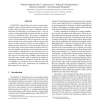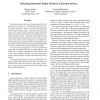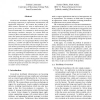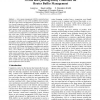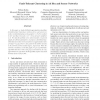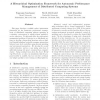ICDCS
2006
IEEE
14 years 5 months ago
2006
IEEE
In IEEE 802.11 based ad hoc networks, by simply manipulating the back-off timers and/or wait times prior to transmission, malicious nodes can cause a drastically reduced allocatio...
ICDCS
2006
IEEE
14 years 5 months ago
2006
IEEE
Byzantine quorum systems have been proposed that work properly even when up to f replicas fail arbitrarily. However, these systems are not so successful when confronted with Byzan...
ICDCS
2006
IEEE
14 years 5 months ago
2006
IEEE
Event-driven distributed infrastructures are becoming increasingly important for information dissemination and application integration. We examine the problem of optimal resource ...
ICDCS
2006
IEEE
14 years 5 months ago
2006
IEEE
The Internet is a hierarchical architecture comprising heterogeneous entities of privately owned infrastructures, where higher level Internet service providers (ISPs) supply conne...
ICDCS
2006
IEEE
14 years 5 months ago
2006
IEEE
Network coordinates provide a scalable way to estimate latencies among large numbers of hosts. While there are several algorithms for producing coordinates, none account for the f...
ICDCS
2006
IEEE
14 years 5 months ago
2006
IEEE
— Active queue management (AQM) in routers has been proposed as a solution to some of the scalability issues associated with TCP’s pure end-to-end approach to congestion contro...
ICDCS
2006
IEEE
14 years 5 months ago
2006
IEEE
This paper studies the use of pricing as an incentive mechanism to encourage private, self-interested nodes to participate in a public wireless mesh network and cooperate in the p...
ICDCS
2006
IEEE
14 years 5 months ago
2006
IEEE
In this paper, we study distributed approximation algorithms for fault-tolerant clustering in wireless ad hoc and sensor networks. A k-fold dominating set of a graph G = (V, E) is...
ICDCS
2006
IEEE
14 years 5 months ago
2006
IEEE
Abstract— In this paper, we explore multi-hop bandwidth estimation assuming arbitrary cross-traffic at each node and develop a new probing method called Envelope that can asympt...
ICDCS
2006
IEEE
14 years 5 months ago
2006
IEEE
This paper develops a scalable online optimization framework for the autonomic performance management of distributed computing systems operating in a dynamic environment to satisf...
